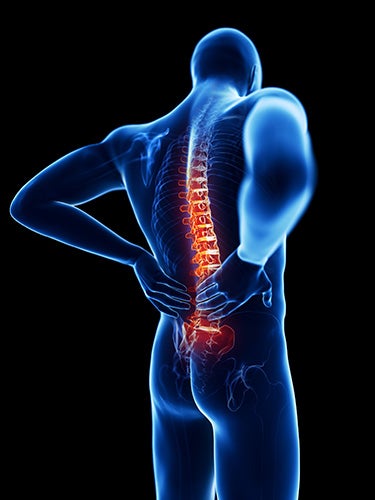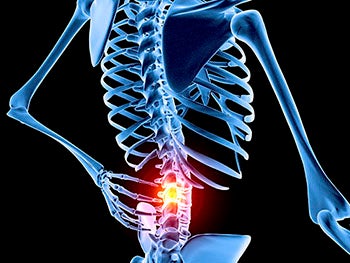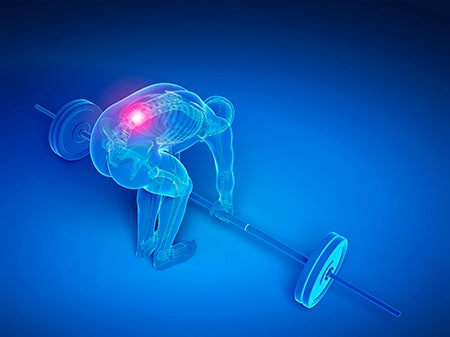Back Pain
 The Basics
The Basics
Back pain is more common than you think; at least 84% of adults experience back pain at some point in their lives and the #1 reason why they visit an orthopedic specialist.
The Good News: for most people, back pain usually heals on its own. Less than 10% of people have pain due to a specific cause such as a fracture or radiculopathy, and less than 1% of back pain is due to a serious systemic issue such as malignancy or infection.
Locations
- Cervical spine (neck): seven vertebrae (C1 – C7)
- Thoracic spine (mid-to-upper back): twelve vertebrae (T1 – T12)
- Lumbar spine (lower back): five vertebrae (L1 – L5)
- The sacrum is the lowest portion of the spine located between the lumbar region and the coccyx (tailbone) composed of five segments that have been fused together.
Although pain can affect any area, the most common is low back pain in the lumbar region.
 Symptoms
Symptoms
Back pain symptoms can vary depending on the cause or severity of injury.
General timelines can be described as:
- cute phase: post injury, lasts 7–10 days
- Subacute phase: 10 days to 12 weeks
- chronic pain: longer than 12 weeks
An acute injury may include some of the following symptoms:
- Aching or throbbing sensation
- Shooting or stabbing pain
- Pain that radiates down your leg
- Pain that worsens with bending, lifting, standing or walking
- Pain that gets better with rest
During the subacute phase, the severity of pain should lessen and overall symptoms should improve.
Some symptoms can indicate a medical emergency. While these conditions are rare, seek immediate medical attention if you experience any of the following:
- Numbness or tingling
- Loss of sensation in the legs or groin
- Loss of bladder or bowel function
- Changes in speech or motor function
Causes
The exact cause of back pain is often unknown but may be attributed to:
- Improper Lift Technique
- Sprain, Strain, Stretch or Pull
- Muscle Tension or Spasms
- Obesity/Lifestyle
- Age Related
- Other Medical Conditions
 Treatment
Treatment
Noninvasive treatment options may include ice and/or heat packs, short-term periods of rest followed by active stretching or movement, physical therapy, physiatry, chiropractic, massage therapy, acupuncture, medications such as acetaminophen and nonsteroidal anti-inflammatory drugs (NSAIDs), muscle relaxers, pain relievers, and/or injections.
*Your specific treatment plan will be created by you and your team.
